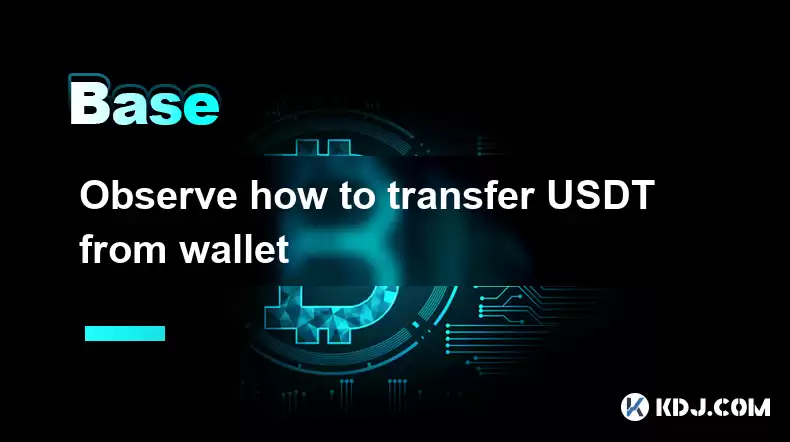-
 Bitcoin
Bitcoin $115000
0.12% -
 Ethereum
Ethereum $3701
4.50% -
 XRP
XRP $3.081
2.99% -
 Tether USDt
Tether USDt $0.0000
-0.01% -
 BNB
BNB $767.9
1.45% -
 Solana
Solana $169.5
3.13% -
 USDC
USDC $0.9999
0.01% -
 Dogecoin
Dogecoin $0.2106
4.30% -
 TRON
TRON $0.3334
1.62% -
 Cardano
Cardano $0.7564
2.54% -
 Stellar
Stellar $0.4165
0.76% -
 Hyperliquid
Hyperliquid $38.75
0.25% -
 Sui
Sui $3.593
3.00% -
 Chainlink
Chainlink $17.08
3.59% -
 Bitcoin Cash
Bitcoin Cash $573.6
4.35% -
 Hedera
Hedera $0.2508
-0.84% -
 Avalanche
Avalanche $23.07
6.46% -
 Ethena USDe
Ethena USDe $1.001
-0.02% -
 Litecoin
Litecoin $120.8
8.17% -
 UNUS SED LEO
UNUS SED LEO $8.943
-0.32% -
 Toncoin
Toncoin $3.400
-5.60% -
 Shiba Inu
Shiba Inu $0.00001255
1.54% -
 Uniswap
Uniswap $9.908
6.32% -
 Polkadot
Polkadot $3.718
2.10% -
 Monero
Monero $303.0
-0.74% -
 Dai
Dai $0.9999
-0.02% -
 Bitget Token
Bitget Token $4.392
0.91% -
 Cronos
Cronos $0.1403
6.31% -
 Pepe
Pepe $0.00001076
1.13% -
 Aave
Aave $267.2
1.80%
Observe how to transfer USDT from wallet
To transfer USDT, determine your wallet type, select a reputable exchange, gather necessary information, initiate the transaction, verify details, and monitor the status on the associated blockchain explorer.
Jan 23, 2025 at 05:18 pm

Observe How to Transfer USDT from Wallet: A Comprehensive Guide
Transferring USDT (Tether) from one wallet to another is a relatively simple process. Here's a step-by-step guide to help you through the process:
Key Points:
- Understand the different types of USDT wallets.
- Choose a reliable and secure exchange.
- Gather the necessary information, including the recipient's wallet address.
- Verify the transaction details before confirming.
- Monitor the status of your transfer.
Steps:
1. Determine Your USDT Wallet Type
There are two main types of USDT wallets: custodial and non-custodial. Custodial wallets, such as Coinbase or Binance, hold your private keys and manage your funds on your behalf. Non-custodial wallets, such as MetaMask or Trust Wallet, give you full control over your private keys and allow you to interact directly with the blockchain.
2. Select a Reputable Exchange
If you're using a custodial wallet, choose a reliable and secure exchange that supports USDT transfers. Consider factors such as reputation, trading volume, and fees.
3. Gather Necessary Information
Before initiating the transfer, ensure you have the following information:
- The recipient's wallet address: This is a unique identifier that represents the recipient's wallet.
- The amount of USDT you want to transfer: Specify the exact amount of USDT you wish to send.
- Network: Select the blockchain network over which you want to transfer your USDT. Common networks include TRC-20, ERC-20, and BSC.
- Transfer fees: Different exchanges and networks charge varying fees for USDT transfers. Factor these fees into your calculations.
4. Initiate the Transaction
Log into your exchange account, navigate to the "Withdraw" or "Send" section, and enter the gathered information. Double-check the recipient's address and the transfer amount to avoid errors.
5. Verify Transaction Details
Before confirming the transaction, carefully review the details provided, including the recipient's address, amount, and network. Ensure that all the information is accurate and complete.
6. Monitor Transfer Status
Once you initiate the transfer, you'll receive a transaction ID. Use this ID to track the status of your transfer on the blockchain explorer associated with the selected network.
FAQs:
What's the difference between TRC-20, ERC-20, and BSC?
- TRC-20 is a token standard on the Tron blockchain, known for low transfer fees.
- ERC-20 is a token standard on the Ethereum blockchain, widely used and supported by many exchanges.
- BSC (Binance Smart Chain) is a blockchain platform developed by Binance, offering faster and cheaper transactions.
How long does an USDT transfer take?
Transfer times vary depending on the network you choose. TRC-20 transfers can take a few minutes, ERC-20 transfers can take several hours, and BSC transfers are typically fast, within seconds.
What if I send USDT to the wrong address?
Unfortunately, USDT transfers are irreversible. If you mistakenly send USDT to an incorrect address, it's unlikely to be recoverable. Double-checking the recipient's address before initiating the transaction is crucial.
Can I transfer USDT from a custodial to a non-custodial wallet?
Yes, you can transfer USDT from a custodial wallet to a non-custodial wallet by choosing the "Withdraw" option on the custodial wallet and providing the recipient's non-custodial wallet address.
What are the risks of transferring USDT?
- Incorrect address: Sending USDT to an incorrect address can result in the loss of funds.
- Network congestion: During periods of high network activity, transfer times may be delayed or fees may increase.
- Exchange failures: Technical issues or security breaches at exchanges can disrupt USDT transfers.
- Fees: Transfer fees can vary depending on the network and exchange used.
Disclaimer:info@kdj.com
The information provided is not trading advice. kdj.com does not assume any responsibility for any investments made based on the information provided in this article. Cryptocurrencies are highly volatile and it is highly recommended that you invest with caution after thorough research!
If you believe that the content used on this website infringes your copyright, please contact us immediately (info@kdj.com) and we will delete it promptly.
- Bitcoin, Fed Rate Cut, and Crypto Stocks: A New Yorker's Take
- 2025-08-05 14:50:12
- Police, Cryptocurrency, Bitcoin Windfall: Unexpected Gains and Cautionary Tales
- 2025-08-05 15:30:12
- MAGACOIN: The Next Shiba Inu ROI? A Crypto Presale Deep Dive
- 2025-08-05 15:30:12
- Bitcoin, Kiyosaki, and the August Curse: Will History Repeat?
- 2025-08-05 14:50:12
- Crypto Airdrops: Your August 2025 Guide to Free Tokens & Opportunities
- 2025-08-05 13:45:13
- Luxury Dining Reimagined: St. Regis Singapore & Marriott's Culinary Celebration
- 2025-08-05 13:45:13
Related knowledge

What is the difference between CeFi and DeFi?
Jul 22,2025 at 12:28am
Understanding CeFi and DeFiIn the world of cryptocurrency, CeFi (Centralized Finance) and DeFi (Decentralized Finance) represent two distinct financia...

How to qualify for potential crypto airdrops?
Jul 23,2025 at 06:49am
Understanding What Crypto Airdrops AreCrypto airdrops refer to the distribution of free tokens or coins to a large number of wallet addresses, often u...

What is a crypto "airdrop farmer"?
Jul 24,2025 at 10:22pm
Understanding the Role of a Crypto 'Airdrop Farmer'A crypto 'airdrop farmer' refers to an individual who actively participates in cryptocurrency airdr...

What is the difference between a sidechain and a Layer 2?
Jul 20,2025 at 11:35pm
Understanding the Concept of SidechainsA sidechain is a separate blockchain that runs parallel to the main blockchain, typically the mainnet of a cryp...

What is the Inter-Blockchain Communication Protocol (IBC)?
Jul 19,2025 at 10:43am
Understanding the Inter-Blockchain Communication Protocol (IBC)The Inter-Blockchain Communication Protocol (IBC) is a cross-chain communication protoc...

How does sharding improve scalability?
Jul 20,2025 at 01:21am
Understanding Sharding in BlockchainSharding is a database partitioning technique that is increasingly being adopted in blockchain technology to enhan...

What is the difference between CeFi and DeFi?
Jul 22,2025 at 12:28am
Understanding CeFi and DeFiIn the world of cryptocurrency, CeFi (Centralized Finance) and DeFi (Decentralized Finance) represent two distinct financia...

How to qualify for potential crypto airdrops?
Jul 23,2025 at 06:49am
Understanding What Crypto Airdrops AreCrypto airdrops refer to the distribution of free tokens or coins to a large number of wallet addresses, often u...

What is a crypto "airdrop farmer"?
Jul 24,2025 at 10:22pm
Understanding the Role of a Crypto 'Airdrop Farmer'A crypto 'airdrop farmer' refers to an individual who actively participates in cryptocurrency airdr...

What is the difference between a sidechain and a Layer 2?
Jul 20,2025 at 11:35pm
Understanding the Concept of SidechainsA sidechain is a separate blockchain that runs parallel to the main blockchain, typically the mainnet of a cryp...

What is the Inter-Blockchain Communication Protocol (IBC)?
Jul 19,2025 at 10:43am
Understanding the Inter-Blockchain Communication Protocol (IBC)The Inter-Blockchain Communication Protocol (IBC) is a cross-chain communication protoc...

How does sharding improve scalability?
Jul 20,2025 at 01:21am
Understanding Sharding in BlockchainSharding is a database partitioning technique that is increasingly being adopted in blockchain technology to enhan...
See all articles

























































































